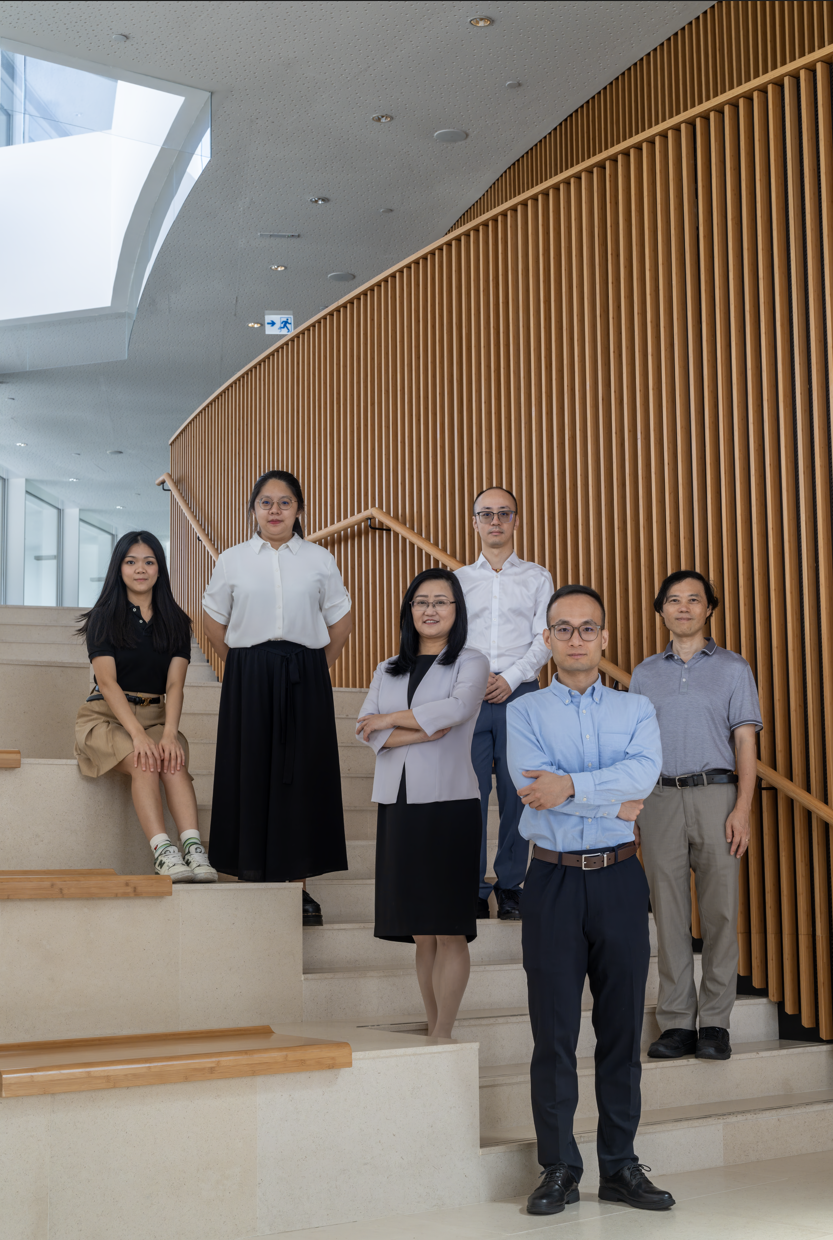HKUST Researchers Unveil Mechanism for Recent Slowdown of Arctic Sea Ice Melt

Since the 1990s, the decline of Arctic sea ice has intensified, a trend that highlights the impacts of global warming. However, as shown by a team from HKUST and their collaborators, this trend has slowed in recent years, and the slowdown is closely linked to the North Atlantic Oscillation (NAO) — fluctuating differences in sea-level atmospheric pressure between the Azores and Iceland over the North Atlantic Ocean. This and other related findings have recently been published in Nature Communications in an article entitled “Recent slowing of Arctic sea ice melt tied to multidecadal NAO variability,” coauthored by Dr. Cen Wang (first author), Prof. Hui Su (corresponding author), Prof. Chengxing Zhai of HKUST’s Emerging Interdisciplinary Areas, Dr. Shiwei Yu and PhD students Huisi Mo and Yanjia Wang from the Department of Civil and Environmental Engineering, as well as Prof. Jianqiu Zheng and PhD student Linwei Jiang from the School of Earth and Space Sciences at the University of Science and Technology of China.
The decline in Arctic sea ice concentration (SIC) is a key indicator of global warming. Since satellite observations began in the late 1970s, this decline has been sharp across all months, with the dramatic losses occurring in September — the month of the annual minimum in SIC. The melt accelerated notably after the 1990s, culminating in a historic low in September 2012. This rapid decline has profound consequences: it triggers cascading ecological impacts, influences mid-latitude winter weather — potentially exacerbating extreme cold events in Asia — and alters shipping routes with significant economic and geopolitical ramifications. As the ice continues to diminish, a pivotal scientific question emerges: when will the Arctic see its first ice-free summer?
Nevertheless, despite the past decade since 2014 being the hottest on record globally, Arctic SIC has not set new historical lows. In fact, the research team from HKUST, led by Prof. Su, Chair Professor in the Department of Civil and Environmental Engineering and Global STEM Professor at HKUST, recently discovered that Arctic sea ice melt has seemingly “hit the brakes” over the past decade. For the first time, their research links this phenomenon to internal atmospheric variability — specifically, the multi-decadal fluctuations of the NAO. They predict that this slowing trend could persist for several more years, perhaps even longer.
The team first analyzed trends in Arctic sea ice using three sets of observational data, and found that the rate of Arctic sea ice loss was 11.3% per decade from the 1990s to 2011, but after 2012, the rate slowed dramatically to just 0.4% per decade — a reduction by a factor of 28. However, putting this in perspective especially of the “ongoing global warming”, Prof. Su reminds us that “it is important to understand what caused the recent slowdown in Arctic sea ice melt” — internal atmospheric variability may be the key driver, as the research team posited.
Subsequently, the team focused on the relationship between natural climate variability and sea ice, and found that the multi-decadal shift of the NAO from a negative to a positive phase has partially offset the long-term melting trend driven by global warming. By analyzing ERA5 reanalysis data from the European Centre for Medium-Range Weather Forecasts, the team found that the correlation between the pre-summer NAO index and September Arctic sea ice is as high as 0.92. Further mechanistic analysis revealed that the NAO can regulate temperature, moisture, and downward longwave radiation in the Arctic.
In the early 2010s, the NAO transitioned from a negative phase to a positive phase — a shift that saw reduced heat and moisture being transported to the Arctic. This transition, along with weakened downward longwave radiation, collectively counteracted the long-term decline in sea ice and slowed its melting rate over the past decade. As Dr. Wang notes, the NAO, “as an atmospheric variability, has limited memory. The fundamental driver may be the Atlantic Multi-decadal Oscillation (AMO), which alters ocean fronts and influences atmospheric wave activities, creating multi-decadal oscillations in NAO.”
In addition to observational data, the team validated their findings using historical simulations and future scenario projections from 24 models in the Coupled Model Intercomparison Project Phase 6 (CMIP6), confirming that decadal variability in the pre-summer NAO is closely related to September Arctic SIC fluctuations. Moreover, the team projected that the slowdown in sea ice loss will persist for several more years or longer, after which the Arctic is expected to enter a renewed phase of accelerated melting, and, without substantial reductions in greenhouse gas emissions, this subsequent rapid loss could trigger a series of severe climate and environmental crises within a decade. However, there may be a silver lining after all: the period of slowdown may be providing a critical climate buffer for a few years, a critical window of opportunity for us to implement effective emission reduction measures and prepare for impending challenges.
[link to paper: https://www.nature.com/articles/s41467-025-63520-0]



